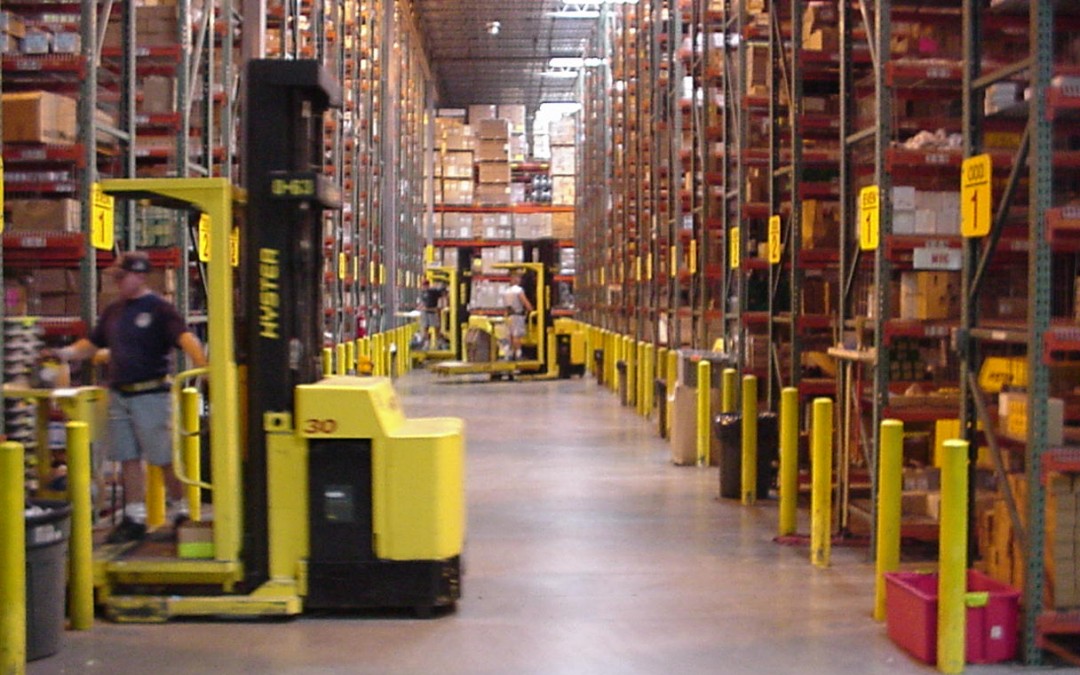Over the past couple of months, I have been thinking about issues in logistics worth investigating here at LoDI. The result was three “themes” of research, which I proposed during the LoDI Kickoff Meeting in September: Order Fulfillment, The Physical Internet, and Logistics and Society. In a series of posts, I will describe these themes and why I think they’re important. The first is
Order Fulfillment
E-commerce has been in the news for many years, but the order fulfillment component has only recently become a hot topic, as companies and the business press realize that excellent service is a result of careful planning, analysis, and execution. What was once—in days going back to the Sears catalog—a game of days or hours, is now a game of minutes.
One of the difficulties of doing academic research in order fulfillment—right now at least—is justifying one’s work in the presence of innovative companies like Amazon, Google, and eBay, each of which has a small army of PhDs working on new ideas. How can the academic world hope to contribute? I would suggest three possible ways:
- Amazon et al. surely will develop novel methods for order fulfillment, both inside the DC and in the last mile, but their methods won’t be made available to the wider economy. Many other, smaller companies won’t have the resources to develop in-house methods for coordinating crowdsourced delivery (for example) or for controlling drones (should this idea ever take off—pun intended) or for many other leading edge techniques. In other words, publishing work that duplicates somewhat the technologies developed by leading companies is justified. I say “somewhat” because as a general rule, I believe we should avoid working on problems the industry will solve anyway.
- What researchers in the logistics industry surely won’t provide are theories and generalized models that increase our understanding of the underlying forces in order fulfillment. Academic research has a calling here, both as a matter of principle and as a means of bringing new knowledge into the classroom. Our students must be ready to “hit the deckplates running” when they graduate.
- Many important problems lie above the interests of a single company, which seeks almost exclusively its own well-being. One example in order fulfillment is the social impact of widespread use of drones. Are American city dwellers really ready to have their skies sprinkled with these little noise makers? (For those who have never heard one, you are in for a treat.) Would the number of drones even make a difference with respect to visual or noise pollution? These are important questions that academic researchers can help answer.
Some Open Questions
Same-Day Delivery. It doesn’t take a subscription to the Wall Street Journal to know that this is a red hot topic in distribution. Just yesterday, Amazon was in the news with a pilot program that uses taxis for same-day delivery during off-peak hours. Three weeks ago Amazon announced a new physical store in Manhattan that is being called a “mini-warehouse.” (For the record, that would put Amazon in the business of “bricks.”) What algorithms are needed to successfully operate a same-day delivery business? What new capabilities would a Warehouse Management System require? Which metro areas are viable for same-day delivery? Is viability simply a matter of population density, or are other factors involved? And by the way, how big is the market for same-day delivery? Will what seems like a luxury today become a “must have” for the next generation of consumers?
City Logistics. As companies attempt to provide ever higher levels of service, the facilities and vehicles that support that service will increasingly encroach on otherwise ordinary city life. How should cities respond? What land use and traffic policies provide the highest quality of life for residents?
DC Design. For decades, distribution centers have been designed to meet throughput requirements at minimum cost. The prospect of same-day delivery and other service promises suggests that entirely new objectives and designs might be in order. Beyond the challenges of same-day delivery, DCs are being asked to support omni-channel distribution from a single facility. What, exactly, does an “optimal” order fulfillment center look like in this context? Further, if DCs to support same-day fulfillment are located in high rent districts of metropolitan areas, we assume storage and flow density will be a top objective in design. What new systems and processes might be required to support these high-density operations?
Last Mile Delivery. Drones are the big subject here, and there are many interesting social and operational questions. Would people really want this kind of service? With such limited battery life, how extensive an area could a fleet of drones cover? What joint transportation models are possible (e.g., trucks carrying drones), and what are the relevant issues and technical questions? For crowdsourced delivery methods, which are only now appearing in practice, what service guarantees can be offered? What models might be needed to support these systems?
I am sure the reader could offer three or four more interesting questions. These are exciting times for logistics and distribution—let the modeling begin!


Recent Comments